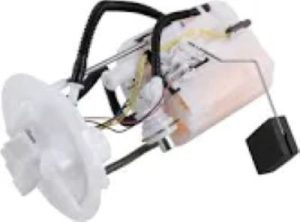It is most important to have a mid winterization during the months so that you can keep word-working of your fuel pump in chilled areas where majority times temperature goes dip into sub-freezing temperatures. The first part involves adding fuel stabilizer to the fuel tank. This additive will prevent the fuel from deteriorating and generating varnish or gum, which can obstruct the pump and fuel lines. In general, 1 ounce of stabilizer is added per 2.5 gallons of fuel. Then run the engine for about 10 minutes to allow it to circulate through the fuel pump and lines, which will protect against ethanol-related fuel degradation—which only gets worse in cold weather.
Another important practice is to drain out of the fuel system excess water. Condensation can accumulate water in the fuel tank, which can freeze in cold conditions, resulting in blockages, and potential damage to the fuel pump. Newer fuel pumps are more sensitive to ice clogs in the lines, especially high-pressure systems that function above 60 psi. In diesel engines, draining the water separator or using fuel system antifreeze treatment can avoid this problem.
Keeping the vehicle filled up with gas also acts as a crucial practice. With the coming of winter, and its accompanying temperature variations, when a fuel tank is close to empty even light though not freeze temperatures can cause moisture to condense inside. Keep your gas tank full so that the air does occupy space for condensation which can freeze, in return will protect everything and save from going to a mechanic repeatedly.

For vehicles that are going to sit idle for several months, pulling the fuel pump fuse or relay also removes a major load from the system when starting in freezing-lot weather. At the extreme end, some will completely drain their fuel system — even with aftermarket pumps from companies like Kemso — particularly when they anticipate the vehicle sitting for long periods of time. This step ensures there is no fuel going bad that can clog up high-flow pumps, causing an efficiency loss of up to 20%.
One question that gets asked a lot amongst motorists is, “What does cold weather do to the fuel pump?” The reason is this can increase the chances of forming water or ice in the system which can create a blockage or wear down the internal components of the pump. Ethanol-blended fuels also soak up more water, which means running them in a very cold climate can increase the risk of freezing up the pump and stressing the impeller.
For additional information on safe-guarding winter fuel pumps and durability, Fuel Pump by Kemso offers high-end fuel systems solutions and maintenance advice for all seasons.